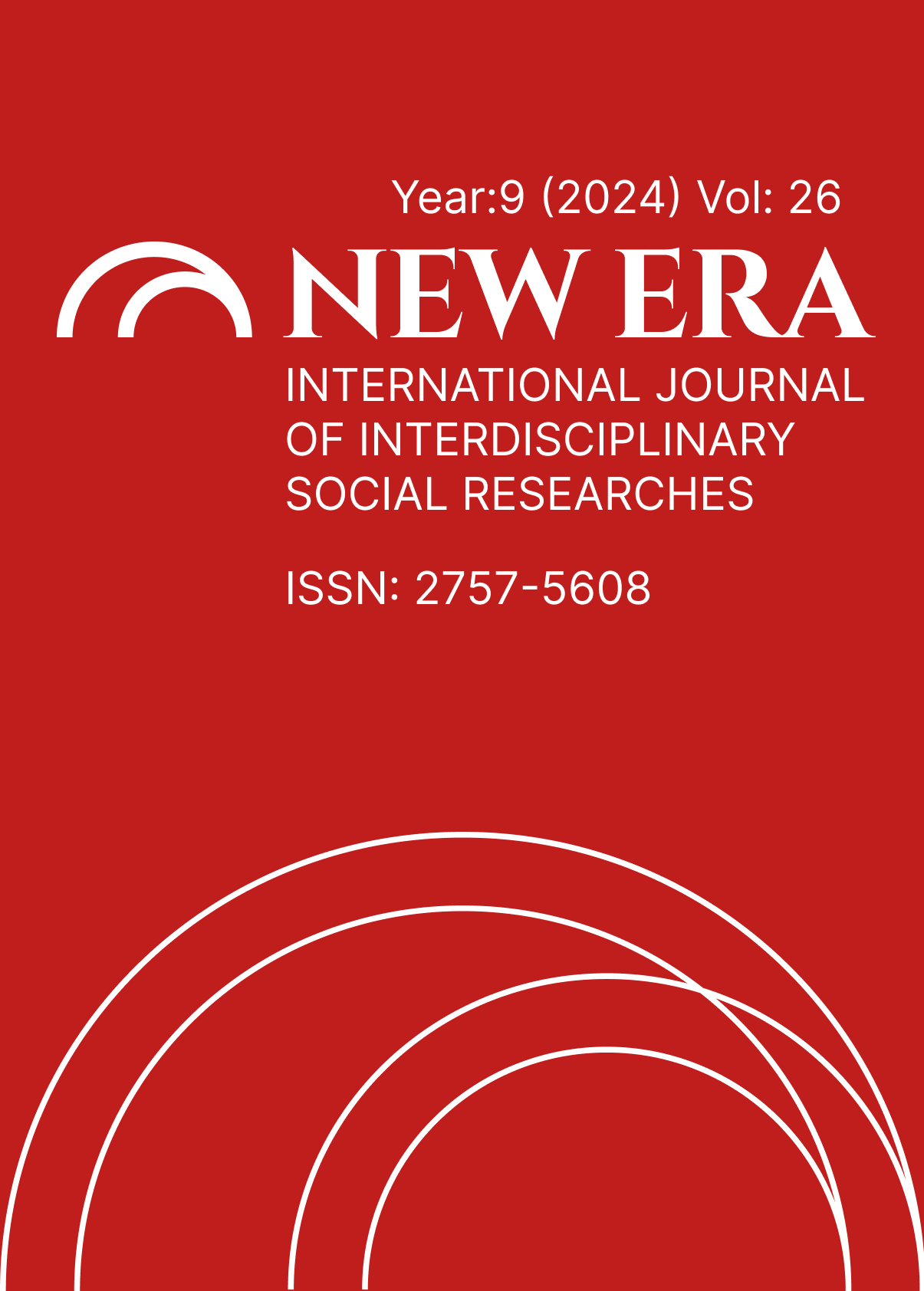TECHNOLOGICAL ARGUMENTS IN ART WITH AN INTERDISCIPLINARY APPROACH
DOI:
https://doi.org/10.5281/zenodo.14551986Abstract
The concept of art, which emerges as an effective force in understanding and questioning the world in which an individual lives, is a phenomenon that changes and develops according to the conditions of the age. Art, which emerges with the synthesis of human intelligence and skill, is an indispensable phenomenon in social space. The concept of art, which is divided into various disciplines with different possibilities of expression, has included different approach foundations and techniques in its own field of inquiry, especially after the second half of the 20th century, with the changes seen in many areas of social life. Art, which has gained a freer environment of expression at the end of a long historical process, has started to interact strongly with other scientific fields along with its own unique realities. The concept of art, which has been in contact with many sciences throughout the historical process, has started to benefit from technological opportunities frequently with the advent of the 20th century. While this dual interaction brings new formations in artistic discourses, the sharp boundaries between different disciplines have started to blur, and while each field is nourished by the teachings of the other field, today's understanding of art has been supported by multiple discourses.
In this study; the relationship between art and technology is examined in an interdisciplinary context, and evaluations are made on how artists interpret technological information with the possibilities of expression in their works of art.
References
Atmaca, A, E. (2011). Modern Sanat Ve Bilgisayar Destekli Sanat Çalışmaları (Dijital Art). Elektronik Sosyal Bilimler Dergisi, Yaz-2011 Cilt:10 Sayı:37 (293-302)
Beyaz, G. G. (2016). Nam June Paik Ve Onun Tabula Rasa’sı: Video. İstanbul Aydın Üniversitesi Dergisi, 8(29), 1-16.
Beyhan, H.C. (2018). “Teknoloji Ve Sanat”. Journal Of Arts, 1(1): 13-22.
Çelik, G. (2017). Güncel Sanatta Disiplinlerarası Etkileşim. Gazi Üniversitesi Sanatta Yeterlik Tezi Resim Anasatdalı Güzel Sanatlar Enstitüsü
Eke, N. P., & Yücel, N. (2023). Dijital Çağda Sanat Ve Sanatçı: Ha: Ar Üzerine Bir İnceleme. Akademik Sanat, (20), 62-75.
Kavrakoğlu,F.(2014-2015) Çağdaş Sanata Varış Video Sanatı Http://Www.Webcitation.Org/6rncauisn) Erişim tarihi:01.05.2024
Kaya, A. (2023). Çağdaş Sanat Formu Olarak Dijital Heykel, Dijital Heykelin Sağladığı Yeni Olanaklar. Sanat ve İkonografi Dergisi(4), 2-9.
Şahiner R.( 2002). Yeni Bir Sanat Eğitimi Üzerine, . Gazi Üniversitesi. G.E.F.’Nin Düzenlediği “Türkiye’de Sanat Eğitiminde Öğretmen Yetiştirme” Konulu Sempozyum Bildirisi, Ankara, 8-10.
Oliveira, N. (2005). Yeni Milenyumda Enstalasyon Sanatı Duyular İmparatorluğu, Akbank Kültür Sanat Yayınları Çev: Osman Akınhay, İstanbul
Özayten, N. (1997). Kavramsal Sanat. Eczacıbaşı Sanat Ansiklopedisi. Cilt 2. İstanbul: Yem Yayınevi.
Uğurlu, H. (2008). Teknoloji Sanat İlişkisi: Günümüzde Teknolojik Sanatların Amacı. Uşak Üniversitesi Sosyal Bilimler Dergisi, 1(2), 247-262.
Uysal, Y. (2022). “Disiplinlerarası Sanat: Bilim Ve Sanat Arasında Köprü Kurmak”, Journal Of Social, Humanities And Administrative Sciences, 8(59):2034-2040.
Downloads
Published
How to Cite
Issue
Section
License
Copyright (c) 2024 NEW ERA INTERNATIONAL JOURNAL OF INTERDISCIPLINARY SOCIAL RESEARCHES

This work is licensed under a Creative Commons Attribution-NonCommercial 4.0 International License.


